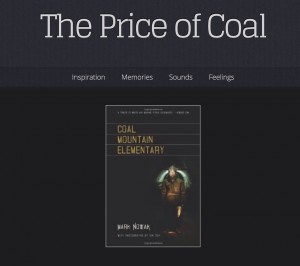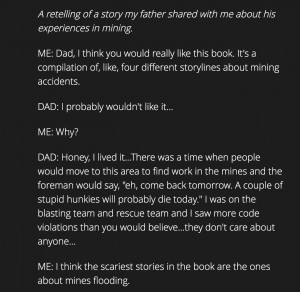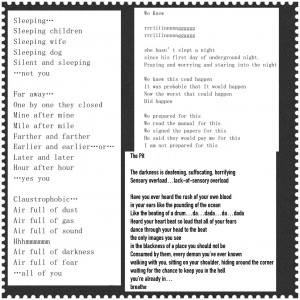Entry 12: Delving into homophonics
After listening to the Penn Sound audio of “Sane as Tugged Vat, Your Love” I decided to look into the genre of Homophonics in general. Some things I found:
1. Penelope Cruz learned her lines for her first American movie: Hi-Lo Country phonetically. Not exactly the same as what Bernstein is doing but, it kind of is. She had no idea what she was actually saying or hearing, she just learned how to say it. Penelope Cruz: Gardian Article
2. Charles Bernstein created a website at UPenn with 94 “experiment” ideas for working with language using phonetic, homophonic, and other linguistic things. It is quite extensive list of things to do with language. It ends with this little nugget:
“Compiled by Charles Bernstein. (C) 1996-2014 by Poets’ Ludicrously Aimless Yearning (PLAY). Dispense only as appropriate and under the supervision of an attending reader. Individual experiments are not liable for injury or failure resulting from improper use of appliance. Any profits accrued as a direct or indirect result of the use of these formulas shall be redistributed to the language at large. Management assumes no responsibility for damages that may result consequent to the use of this material in educational institutions or individual writing project.”
Which I find very wonderful. I think this is a really cool resource in general, but also when talking about his homophonic translation poems. He thinks about this stuff a lot from the looks of this list! Bernstein 94 Experiments
3. Next I found an article by a writing student at Columbia (not sure what level of student). His article attempts to explain why this type of poetry, translating homophonically, would be useful in the world of writing/litearture and he says:
“Because content represents the utilitarian, nothing seems less useful than the content-based translation of an old Latin poem. The poem is, if anything, more beautiful than useful.
I do not mean to insinuate that homophonic translation should be pursued in every case. That would be ridiculous. Imagine if Edith Grossman homophonically translated Don Quixote into English. The result would be an aesthetic mess more schizophrenic than the book’s quixotic anti-hero. What I am trying to say is that homophonic techniques create a dialogue and let audiences to question the unwritten codes of artistic modality. When one is reading a translation, one is always reminded of the daunting question: what is the function of art?”
I found this article, this section in particular, useful in deciding why this type of writing would be worth pursuing other than for something “different” to do. Why homophonic translation
4. Finally, this last article is another attempt at deciding why this type of poetry exists, I tend to lean toward the first at this point but, it has another example and some fun comments. Homophonic translations as a game of telephone
This is obviously not an extensive list but I thought I would share what I found when delving into this area. It is kind of cool and might be fun to try at some point.





Recent Comments